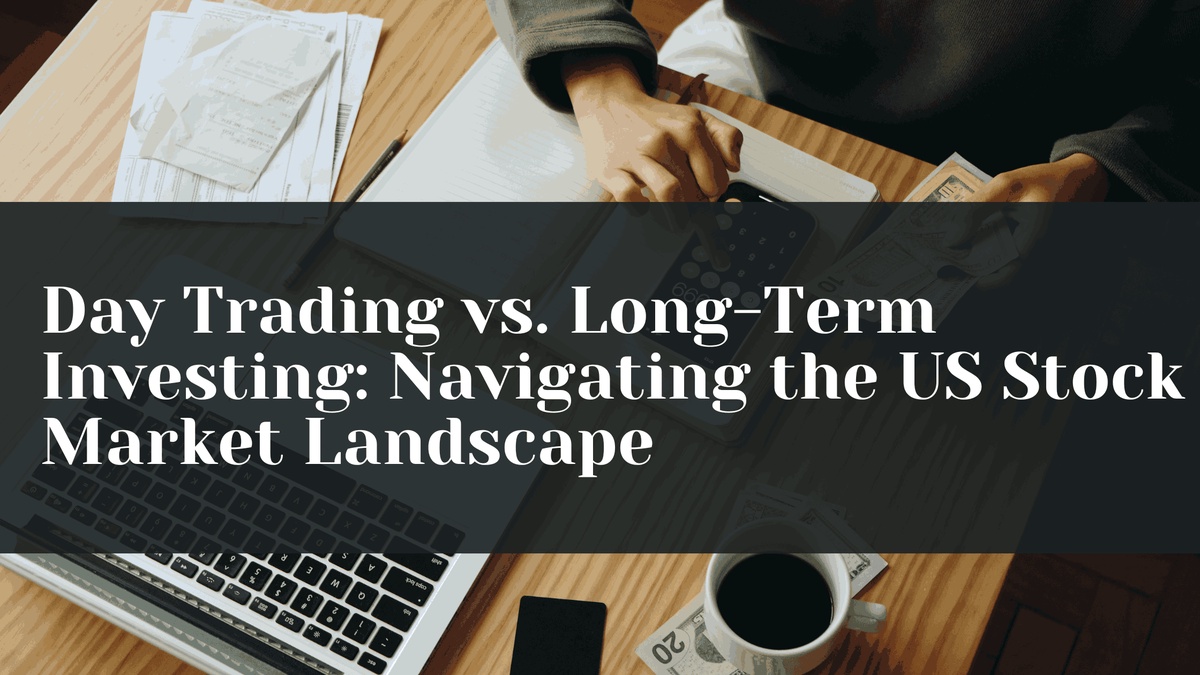The US stock market offers a diverse playground for investors, accommodating a plethora of investment strategies. Among these, day trading and long-term investing stand out as two prominent approaches. These strategies diverge significantly in objectives, timeframes, and risk appetites. Hence, understanding their intricacies is paramount for investors. In this extensive guide, we will dissect the realms of day trading vs investing, empowering you to choose the path that resonates with your financial aspirations, risk tolerance, and personal inclinations.
Day Trading: Seizing Short-Term Opportunities
Understanding Day Trading
Day trading epitomizes a fast-paced trading style where individuals actively engage in buying and selling financial instruments like stocks, options, or currencies within a single trading day. The central aim is to leverage short-term price fluctuations and capitalize on market volatility.
Pros of Day Trading
Potential for Quick Profits: Day trading allures with its promise of swift and substantial gains. By swiftly entering and exiting positions within a day, traders can harness short-term price movements for profit maximization.
Mitigated Overnight Risk: Day traders typically close all positions before the trading day ends. This approach shields them from overnight risks associated with holding positions, such as unforeseen news events or earnings reports, which might lead to significant price gaps.
Active Engagement: Day trading demands constant vigilance during trading hours, making it ideal for individuals thriving in high-stakes, adrenaline-charged environments. If you relish making prompt decisions and actively managing investments, day trading might resonate with you.
Cons of Day Trading
Elevated Risk Profile: Day trading is synonymous with heightened risk. The rapid decision-making and execution it entails can translate into substantial losses if not executed prudently. Novice traders, in particular, face vulnerability to capital depletion.
Time-Intensive: Successful day trading necessitates a full-time or near-full-time commitment during trading hours, typically spanning from 9:30 AM to 4:00 PM Eastern Time in the US. This might be impractical for individuals juggling other professional or personal commitments.
Emotional Strain: The pressure of rapid decision-making, coping with losses, and managing the emotional rollercoaster of intraday trading can exact a toll on traders' psychological well-being. Emotional discipline is imperative for averting impulsive decisions driven by fear or greed.
Long-Term Investing: Cultivating Patience for Prosperity
Understanding Long-Term Investing
Long-term investing entails purchasing financial assets like stocks, bonds, or real estate with the intention of holding them over an extended period. The focal point lies in the fundamental value of assets and their potential for sustained growth.
Pros of Long-Term Investing
Reduced Stress: Long-term investing necessitates less frequent monitoring and decision-making compared to day trading. Investors can adopt a more hands-off approach, alleviating the emotional strain associated with incessant market surveillance.
Power of Compounding: Long-term investors harness the power of compounding. As investments yield returns over time, these returns can be reinvested, potentially fostering significant wealth accumulation.
Historical Reliability: Historically, long-term investing in the US stock market has emerged as a dependable wealth-building strategy. The market's enduring growth trajectory, punctuated by periodic downturns followed by recoveries, underscores its resilience.
Cons of Long-Term Investing
Gradual Returns: Long-term investing may not yield immediate profits. Investors must exercise patience and discipline, acknowledging that substantial gains might materialize over years or even decades.
Market Volatility: Long-term investors may encounter market downturns and bear markets, testing their resolve. During such periods, the value of investments may depreciate, potentially resulting in paper losses.
Limited Control: Long-term investors wield restricted influence over short-term price fluctuations. Market volatility and external factors can sway investment values. Nevertheless, the emphasis remains on long-term growth prospects rather than short-term price shifts.
Choosing Your Investment Journey
Having explored the intricacies of day trading vs investing, let's delve into the pivotal considerations guiding your investment decision-making process.
Assessing Risk Tolerance
Your risk tolerance serves as a cornerstone in determining your preferred investment strategy. It mirrors your readiness and capacity to weather investment fluctuations and potential losses.
Evaluating Time Commitment
Your availability and dedication to managing investments play a pivotal role in selecting between day trading and long-term investing.
Defining Financial Objectives
Your financial goals and aspirations serve as guiding beacons in charting your investment path.
Assessing Emotional Resilience
Managing the emotional aspects of investing is crucial for navigating market volatility with equanimity.
In Conclusion
In the realm of investing, there exists no one-size-fits-all approach. The choice between day trading and long-term investing hinges on myriad factors, including risk tolerance, time commitment, financial goals, and emotional resilience. Whether you opt for the dynamism of day trading or the patience of long-term investing, remember that success in investing demands knowledge, prudence, and adaptability. Choose wisely and remain prepared to adjust your strategy as circumstances evolve.


No comments yet